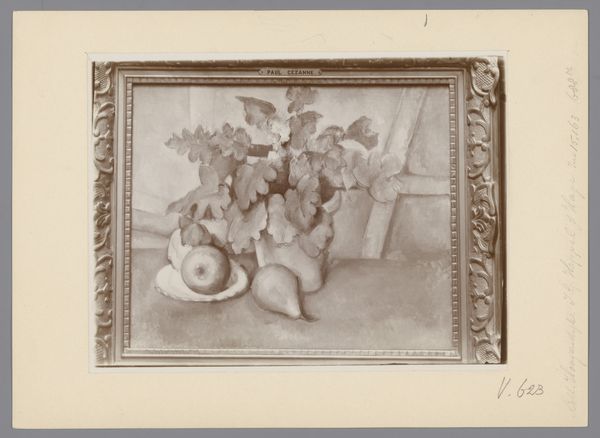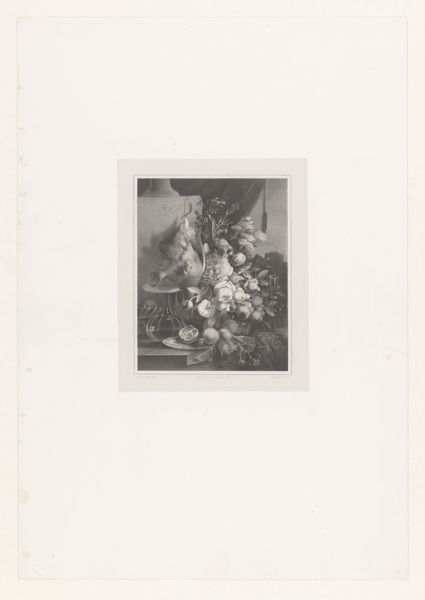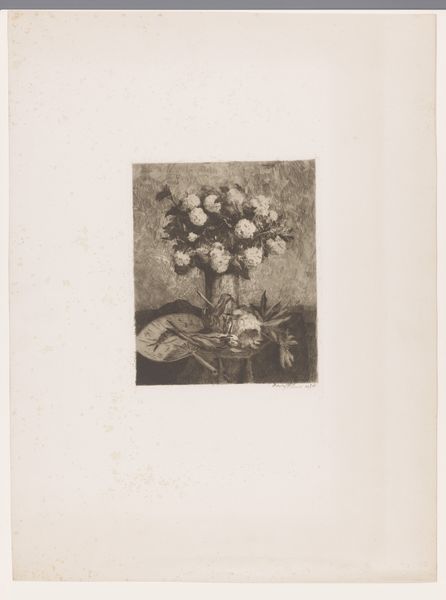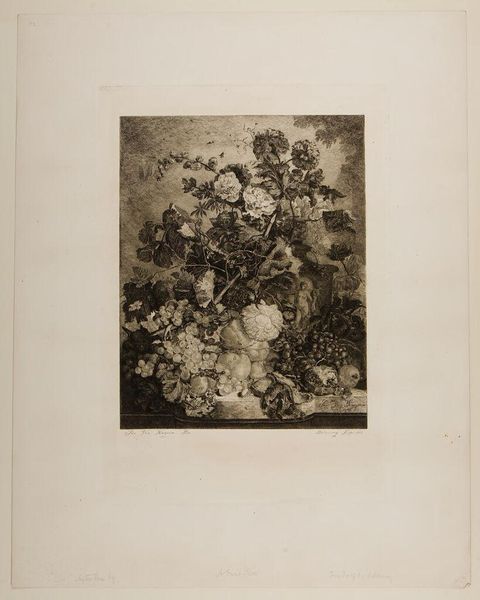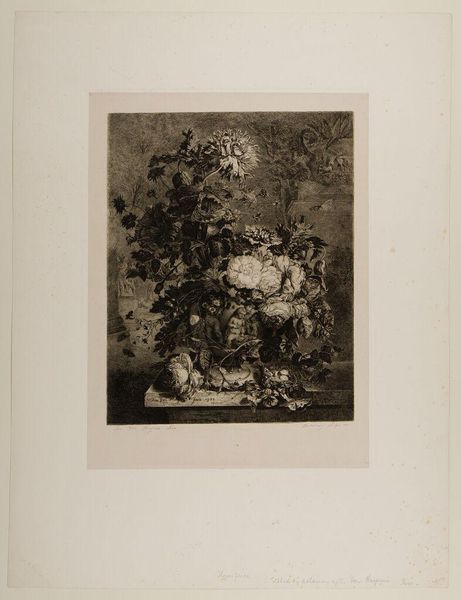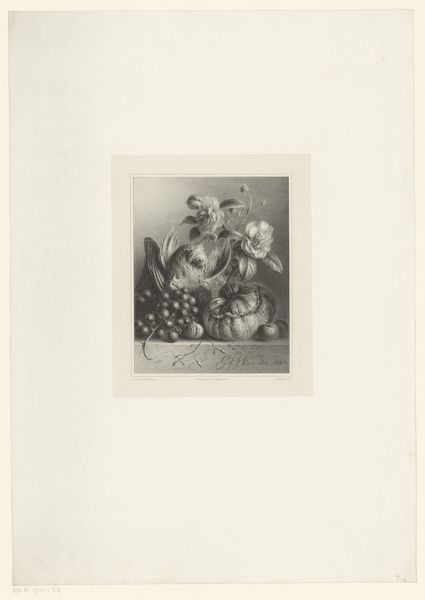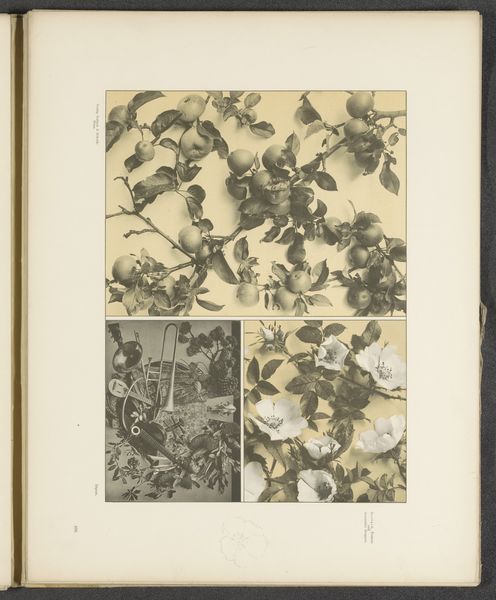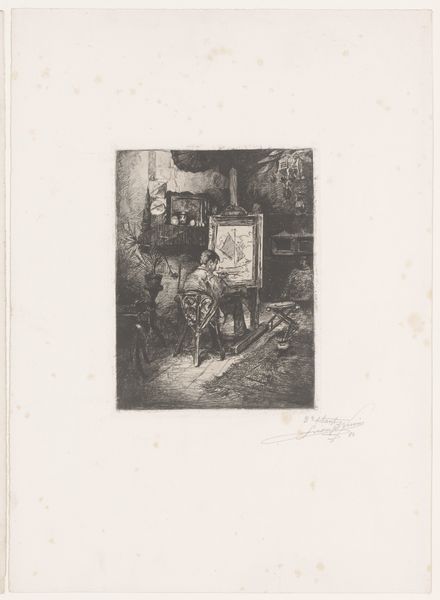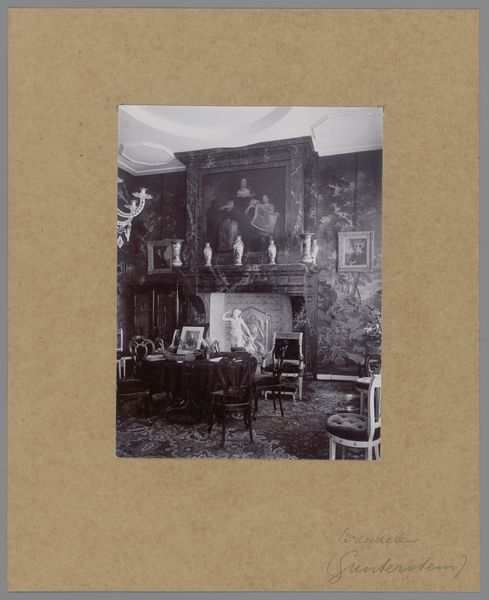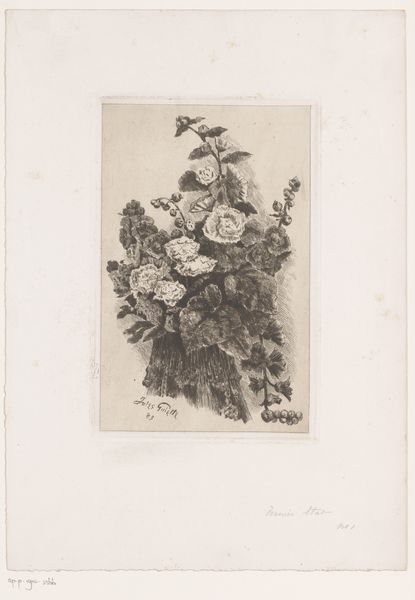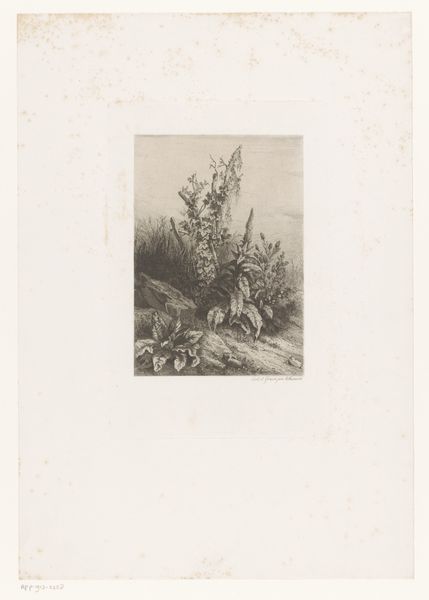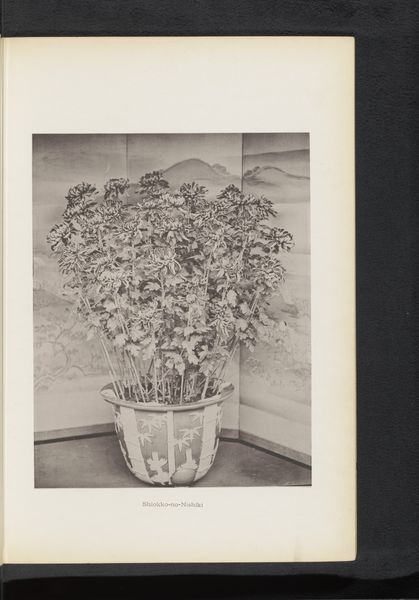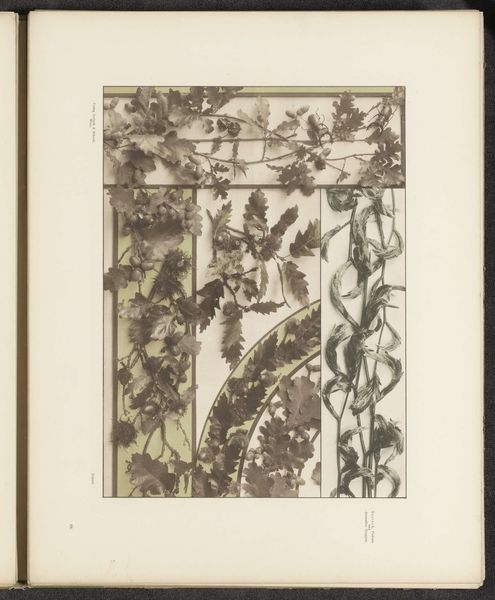
Fotoreproductie van een schilderij met stilleven met planten door Paul Cézanne uit de collectie Hoogendijk, nu in The Barnes Foundation c. 1915
0:00
0:00
Dimensions: height 233 mm, width 181 mm, height 302 mm, width 234 mm
Copyright: Rijks Museum: Open Domain
Editor: Here we have a reproduction photograph of Paul Cézanne's "Still Life with Plants," from around 1915. It's quite muted in this format, a bit ghostly almost, and yet the composition is still so vibrant. How do you interpret this work, seeing it through the lens of its photographic reproduction? Curator: What immediately strikes me is the flattening of Cézanne’s original, the translation of paint into a monochrome image. The original, full of color and impasto, challenges academic painting traditions. It dismantles notions of a singular, fixed perspective. What does this reproduction do? Editor: It seems to distance us further from the original experience. The textures, the brushstrokes… they’re diminished, making it more about composition than the raw physicality of painting. Curator: Exactly! The photograph serves as a layer of interpretation, neutralizing the artist’s hand and aesthetic choices. This stillness allows us to consider its domestic setting, which historically confined women artists. Think about the power structures implicit in rendering that private space for a public, often male, gaze. What tensions do you feel arising from this shift? Editor: It's interesting. While still life traditionally celebrated domesticity, Cézanne disrupts that ideal through abstraction and fractured perspectives. The photo then further abstracts that disruption, almost reclaiming some of the distance. Curator: Precisely. And perhaps opens up discussions about representation, reproduction, and how photography itself contributes to constructing our understanding of art history. It underscores the continuous layering of meaning and context. Editor: It's fascinating how a photo of a painting can spark so much dialogue about the painting itself, about gendered space and accessibility! It makes you question the nature of originality. Curator: Absolutely. And reveals how reproductions shape and inevitably transform the way we engage with art, and also how images affect different genders viewing this art. There's so much power in how these pieces circulate and are seen.
Comments
No comments
Be the first to comment and join the conversation on the ultimate creative platform.
